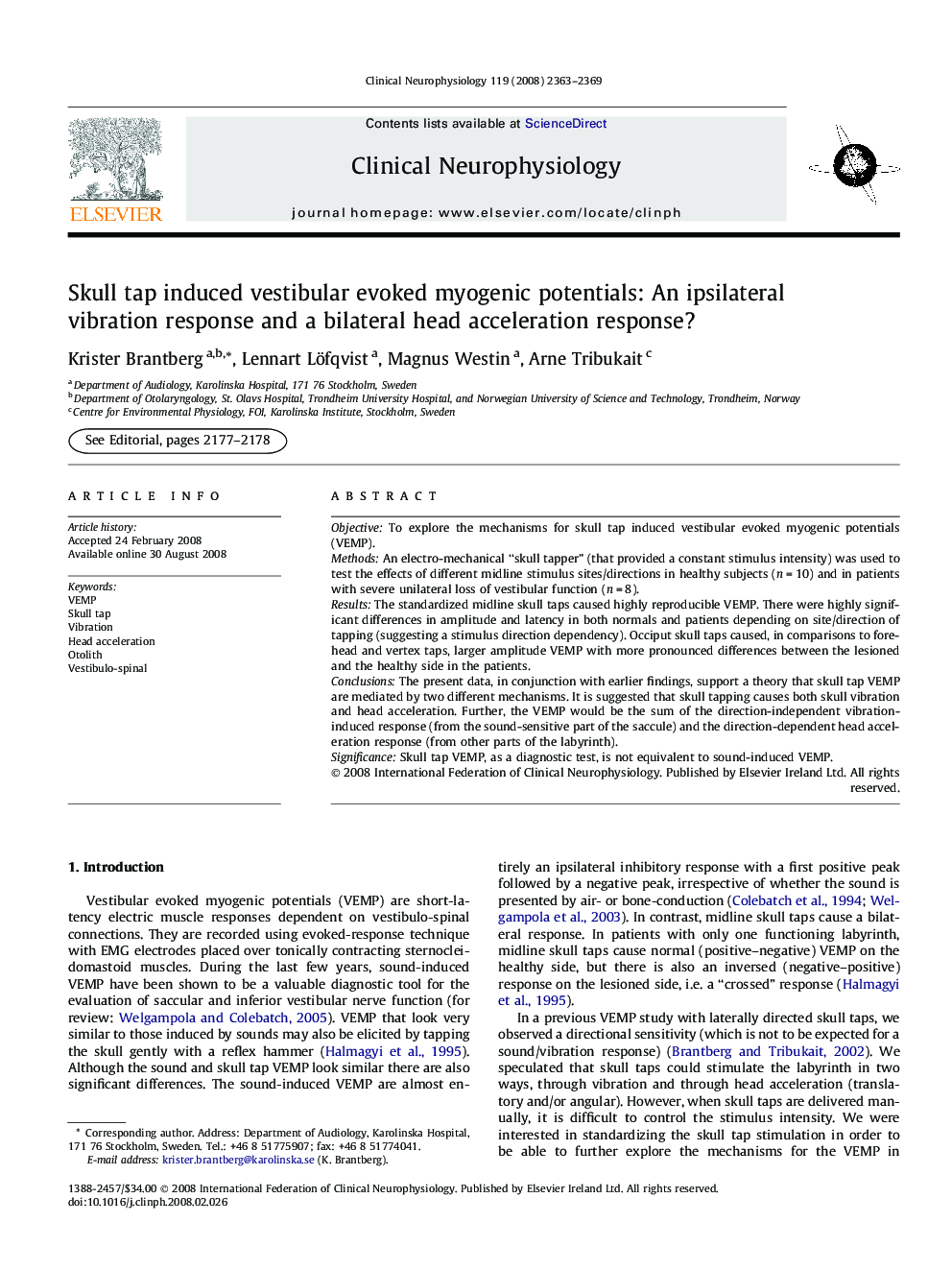| Article ID | Journal | Published Year | Pages | File Type |
|---|---|---|---|---|
| 3046473 | Clinical Neurophysiology | 2008 | 7 Pages |
ObjectiveTo explore the mechanisms for skull tap induced vestibular evoked myogenic potentials (VEMP).MethodsAn electro-mechanical “skull tapper” (that provided a constant stimulus intensity) was used to test the effects of different midline stimulus sites/directions in healthy subjects (n = 10) and in patients with severe unilateral loss of vestibular function (n = 8).ResultsThe standardized midline skull taps caused highly reproducible VEMP. There were highly significant differences in amplitude and latency in both normals and patients depending on site/direction of tapping (suggesting a stimulus direction dependency). Occiput skull taps caused, in comparisons to forehead and vertex taps, larger amplitude VEMP with more pronounced differences between the lesioned and the healthy side in the patients.ConclusionsThe present data, in conjunction with earlier findings, support a theory that skull tap VEMP are mediated by two different mechanisms. It is suggested that skull tapping causes both skull vibration and head acceleration. Further, the VEMP would be the sum of the direction-independent vibration-induced response (from the sound-sensitive part of the saccule) and the direction-dependent head acceleration response (from other parts of the labyrinth).SignificanceSkull tap VEMP, as a diagnostic test, is not equivalent to sound-induced VEMP.
